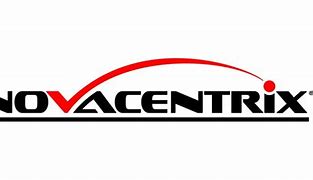We are changing our name from Blue Wolf to QIC Global
We are changing our name from Blue Wolf to QIC Global
Reduce privacy risks for keeping organizational data safe with the support of ISO 27701. Promote a safety culture and ensure the confidentiality of your internal documents!





When it comes to privacy management of organizational documents (employees, stakeholders, and customers), the first standard that comes to mind is ISO 27001. ISO 27701 is an extension of the aforementioned. It has designed a practical set of clauses that provide comprehensive support to companies in detecting potential threats. Two standards which have also helped in crafting those clauses are ISO 27001 and ISO 29001. The aim of ISO 27701 is to ensure data safety by employing a stringent security protocol. The framework of the standard supports responsible management that is committed to establishing effective policies and operations for detecting and minimizing data safety risks.
Another priority of ISO 27701 is enabling a sense of accountability to meet compliance. The protocol not only promotes a safety culture but also helps organizations to comprehend regulatory obligations. With the presence of the certification, a company efficiently accomplished compliance while taking preventive measures for the forthcoming adversity. The purpose of the standard is to help management with an alert system. This extended version of the original information security management system adds an extra effort to curate individual action plans for different data types. Exclusive prevention policies can be formed for each type based on the available resources.
ISO 27701 is the newest information privacy management system standard. It specifies privacy requirements based on individual data and risk type. It offers a plethora of benefits to organizations regardless of their size. It is a more exclusive form of the former one and enables a company with the following -

ISO 27701:2019 is an extension of the Privacy Information Management System (PIMS) of the organization; it builds on ISO 27001 and 27002. In order to be compliant, organizations must:
The common non-conformities are:
By filling these gaps, you will not only help cement your organization’s privacy posture but also develop stakeholder confidence.



“I want to express my sincere appreciation for your support during our recent ISO audit.”


“One of the best business decisions I think we've made in the entire time we've been here in the company.”


We make auditing your ISO Standards easy. We know audits can be stressful. We’ll take the stress out.


“What seemed like a very intimidating process … was made simple … and [has] elevated our quality and safety program to another level.”


“…our staff feel comfortable talking to [the auditor]… makes you feel like you are working together”


“…Relaxed, didn't feel pressured..."


“I would just say, if you want the best and you want to things done quickly and accurately that I’d go with Blue Wolf. The service was great. Again, just to the point, very speedy, not a lot of fluff around things. We just got to work and got it done and that was the objective.”


“Your approach [to the audit process] is by far superior than any other audit I’ve ever been through. The contrast was night and day”


“There was so much going on at the time of the audit that I just wanted to go back to the audit, it was more relaxing”


“I don’t ever want to experience an audit a different way”


“If everybody could have an audit experience like this, more and more people would actually consider an ISO certification”


“I learned a whole lot from what we just went through with [the auditor] that I didn’t even understand about the standard before”


“Our experience has been that this process in working with the auditors has shown us more ways to improve internally than what we expected”


“What seemed like a very intimidating process … was made simple … and [has] elevated our quality and safety program to another level.”


“…Relaxed, didn't feel pressured..."


“…our staff feel comfortable talking to [the auditor]… makes you feel like you are working together”


“It’s a very smooth and very clear process. Definitely recommended.”


"The auditor was very knowledgeable, very understanding, very helpful."


“Would give them a 10 out of 10 and would highly recommend them to anybody looking to get ISO certification in the future.”


“I found Blue Wolf to be the Cheapest and most experienced in my eyes ‘cause all of the price ranges were higher than Blue Wolf, so I stuck with Blue Wolf. Their quality was very high as well.”


“The service provided by Blue Wolf has been second to none.”


“Blue Wolf streamlined the entire process. They were very easy to communicate with and work with, very cordial, and just an all-around good experience.”


“Blue Wolf makes a great partner for not only getting but maintaining your ISO certifications.”
Quality Management Systems
Environmental Management Systems
Occupational Health and Safety Management Systems
Information Security Management Systems
The Information Technology (IT) Service Management System Standard for earning global recognition!
Global Quality Management Standard for Medical Devices
Energy Management System efficiency
Food Safety Management Systems
Anti-Bribery Management System
Business continuity management system
The Privacy Management Standard for corporate documents
The education management standard for a better learning experience!